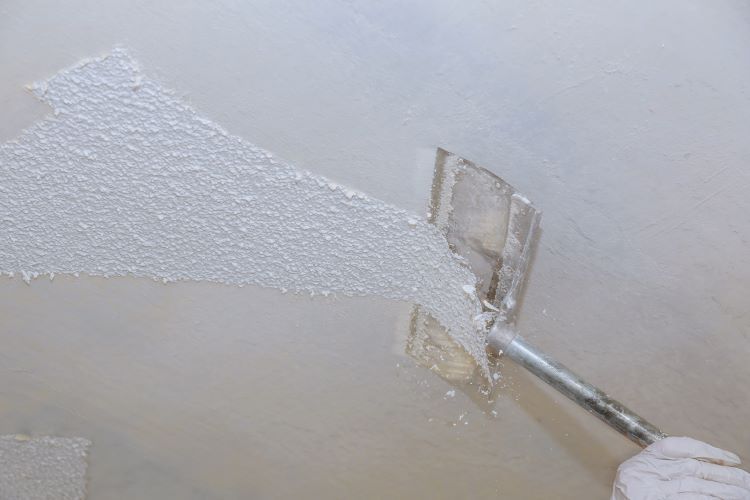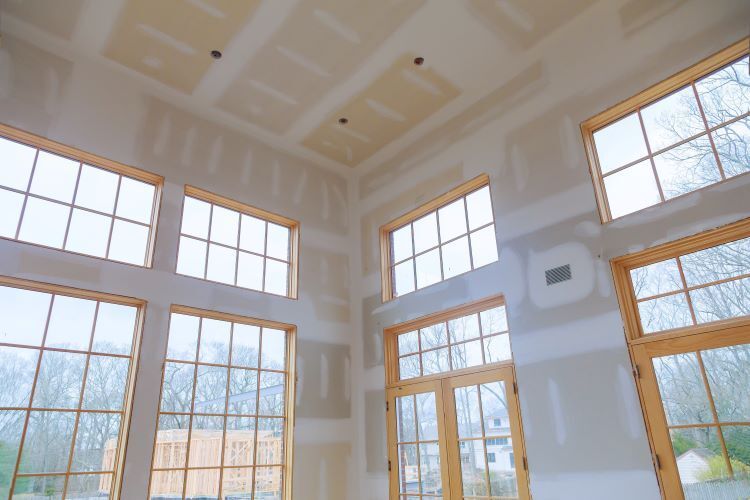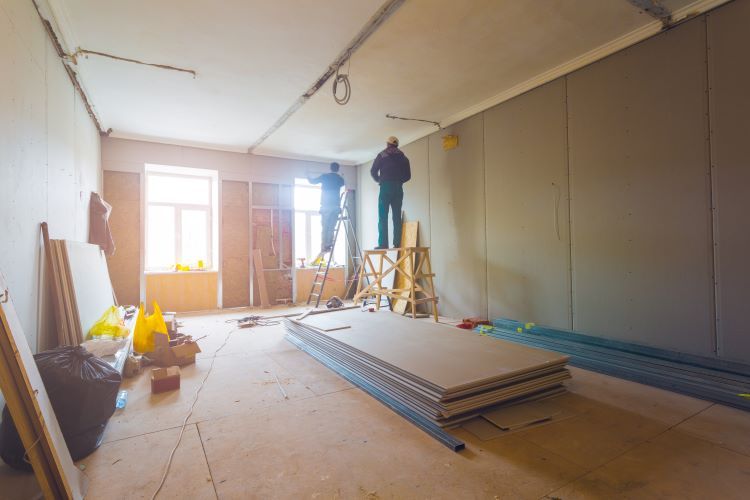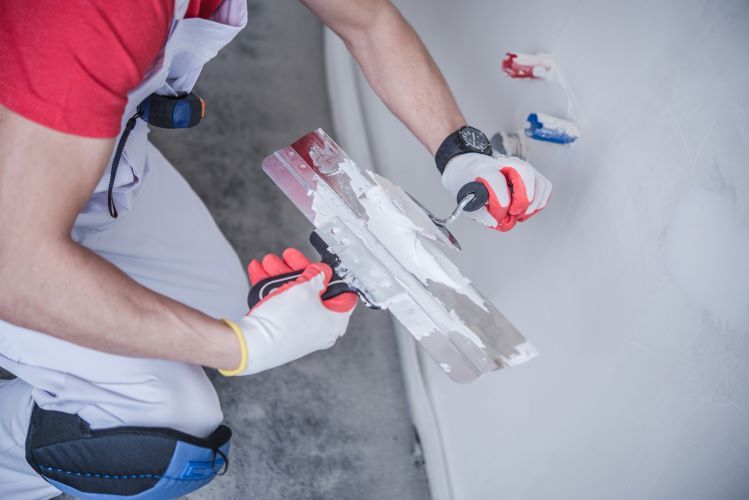Things to Consider When Removing Popcorn Ceilings

Popcorn ceilings, also known as textured or acoustic ceilings, were once a popular design trend in homes across North America. However, many homeowners are now choosing to remove this outdated feature in favor of smooth, modern ceilings. While removing popcorn ceilings can dramatically improve the appearance of your home, there are several important factors to consider before beginning this project.
In this article, we’ll explore the key considerations when removing popcorn ceilings, including safety concerns, preparation steps, and the benefits of hiring a professional like St. John's Drywallers for the job.
1. Asbestos Testing: A Crucial First Step
One of the most important considerations when removing popcorn ceilings is the potential presence of asbestos. Popcorn ceilings installed before the 1980s may contain asbestos, a harmful material that can pose serious health risks if disturbed. Inhaling asbestos fibers can lead to lung diseases, including mesothelioma and asbestosis.
Before starting any removal process, it’s essential to have the ceiling tested for asbestos by a qualified professional. If asbestos is detected, you should hire an asbestos abatement specialist to safely remove the ceiling. Attempting to remove asbestos-laden popcorn ceilings on your own can be dangerous and is strongly discouraged.
2. The Mess Factor: Preparing Your Space
Removing popcorn ceilings can be a messy and labor-intensive process. The texture is often removed by scraping, which can create a significant amount of dust and debris. Proper preparation of the space is critical to minimize the mess and protect your home’s interior.
Here are some preparation tips:
- Cover Furniture and Floors: Before starting, remove as much furniture from the room as possible. For any items that remain, cover them with plastic sheeting or drop cloths to protect them from dust. Cover floors with plastic or heavy-duty tarps to make cleanup easier.
- Seal Off the Area: If you're working in a larger home, seal off doorways and vents to prevent dust from spreading to other areas of your home. You can use plastic sheeting and painter’s tape to block off openings.
- Wear Protective Gear: Even if asbestos isn’t present, removing popcorn ceilings will create a lot of dust. It’s essential to wear safety goggles, a dust mask or respirator, and protective clothing to minimize exposure to dust and debris.
3. Assessing Ceiling Condition
Before starting the removal process, it's important to assess the condition of your ceiling. Popcorn ceilings that have been painted over or have water damage may be more difficult to remove than unpainted ceilings. Painted ceilings often require additional steps, such as applying a chemical stripper or sanding the surface before scraping.
If the ceiling is damaged or has cracks, repairs may be needed after the texture is removed. In such cases, it’s wise to hire a professional drywall contractor to ensure that the ceiling is restored to a smooth, flawless finish.
4. Choosing a Removal Method
There are several methods for removing popcorn ceilings, and the right one depends on the condition of the ceiling and your comfort level with DIY projects. The most common methods include:
- Wet Scraping: This is the most popular method for removing popcorn ceilings. It involves spraying the ceiling with water to soften the texture and then using a wide scraper to remove it. This method works best on unpainted ceilings.
- Dry Scraping: If the ceiling has been painted, dry scraping may be necessary. However, this method is more labor-intensive and creates more dust. You may need to sand the ceiling afterward to achieve a smooth surface.
- Chemical Removal: For heavily painted ceilings, chemical strippers can be applied to dissolve the texture. This method requires proper ventilation and protective gear due to the fumes produced by the chemicals.
- Sanding: In some cases, sanding the ceiling may be necessary to remove stubborn texture. This process requires specialized equipment and is best left to professionals due to the amount of dust it produces.
5. Repair and Refinishing
Once the popcorn texture is removed, you’ll likely need to repair any imperfections or cracks in the ceiling. This may involve patching holes, filling in dents, and smoothing the surface with joint compound.
After repairs are made, the ceiling will need to be refinished. Many homeowners opt for a smooth, modern ceiling, but other finishing options are available, such as knockdown texture or a light orange peel texture. The finishing process requires precision and skill to ensure an even, polished look.
6. Time and Effort
Removing popcorn ceilings is a time-consuming process that can take several days, depending on the size of the room and the condition of the ceiling. Between preparation, scraping, repairs, and refinishing, it’s important to set realistic expectations for how long the project will take.
For homeowners with busy schedules or those who are not comfortable with DIY projects, hiring a professional drywall contractor can save time and ensure high-quality results.
7. The Benefits of Professional Popcorn Ceiling Removal
While DIY popcorn ceiling removal is possible, hiring a professional drywall contractor like St. John's Drywallers offers several key benefits:
- Safety: Professionals are trained to handle asbestos testing and removal if necessary. They also have the right protective gear and equipment to minimize exposure to harmful materials.
- Efficiency: Professionals can complete the job more quickly and with less mess than a DIY approach. They have the expertise to assess ceiling conditions, choose the best removal method, and handle any necessary repairs.
- High-Quality Finish: Achieving a smooth, even ceiling can be challenging for DIYers. Professionals have the experience to ensure that your ceiling looks flawless after the texture is removed.
- Cleanup: Removing popcorn ceilings creates a lot of debris, and cleanup can be a hassle. Professional contractors handle all the cleanup, leaving your home looking neat and refreshed.
Conclusion
Removing popcorn ceilings can transform the look of your home and create a modern, updated interior. However, it’s essential to consider key factors like asbestos testing, the condition of your ceiling, and the best removal method before starting the project. For homeowners looking to save time, avoid mess, and achieve a high-quality finish, hiring a professional like St. John's Drywallers is the best option.
At St. John's Drywallers, we specialize in safe, efficient popcorn ceiling removal and drywall finishing. Our experienced team can help you refresh your ceilings and enhance the beauty of your home. Contact us today to schedule a consultation and take the first step toward a smoother, more modern ceiling.
You might also like



Book a Service Today
We will get back to you as soon as possible
Please try again later
St. John's Drywallers
Navigation
Navigation
Working hours
- Mon - Fri
- -
- Sat - Sun
- Appointment Only
*This is a referral website. All work is performed by professional, licensed contractors.